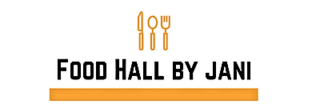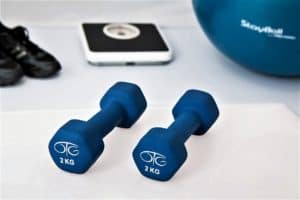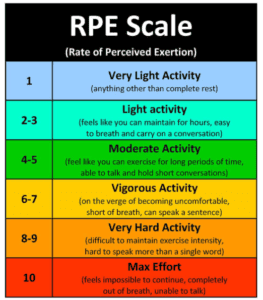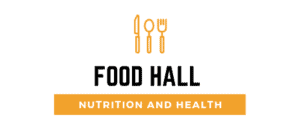This post is a companion to Losing Muscle Mass As You Age, an article I wrote for the website of Grace Rivers, RD, LDN, CDCES.
Grace has spent years counseling people with diabetes as a dietitian and Certified Diabetes Educator. She and fellow dietitian Stephanie Turkel, MS, RDN share expertise via their blog and nutrition content writing.
Can proper nutrition keep you from losing muscle mass? Experts agree that quality protein is essential to building muscle.
Anabolic resistance, however, can prevent you from using the protein you eat to make new muscle tissue or repair existing lean mass.

Would you like to save this recipe or article?
You won't get spam from me, I promise!
Similar to insulin resistance which keeps your cells from processing the sugar in foods, anabolic resistance is when your cells can’t make use of the amino acids from protein breakdown to build lean tissue.
Regular exercise with weights, stretchy bands, or even, your own body weight will correct this situation. Working your muscles often will help your cells scoop up the amino acids from protein foods and become stronger.
Banking lean tissue through strength training, aka resistance exercise, gradually changes body composition and improves strength and function at any age.
I participate in the Amazon Associates affiliate program and may earn a commission at no increased cost to you if you purchase a product through links on this site.
How Much Protein Should I Eat To Keep From Losing Muscle Mass?
To preserve muscle tissue and to boost mass, “protein is king,” according to Dr. Spencer Nadolsky, who is “known as the doctor who lifts.”
The daily amount (DRI) for adults recommended by the Institute of Medicine is about 0.4 g/lb, which would be about 55 to 60 grams for a 150-lb person.
This is not enough for older people, whose daily needs, without an exercise program are 0.5 g/lb or more each day. Fitness experts, including Dr. Nadolsky, believe that building muscle with strength training requires a bit more protein.
Aim to eat between 75 to 90 grams if you weigh 150 pounds or 60 to 72 grams if your weight is closer to 120 pounds.
Spread your protein allowance throughout the day’s meals and snacks. Providing a continuous supply of amino acids is key.
Animal sources of protein are best for building and keeping your muscles. But that doesn’t mean you have to choose red meat.
Eggs, milk, and cheese provide non-breathing animal protein choices. Fish and chicken are also options. Protein powders, bars, and supplements are quick fixes for protein and amino acids.
Try to include all the essential amino acids with your meals, especially leucine since it stimulates muscle-building pathways.
Minimizing sources of saturated fats is important, as well, particularly if you are obese, overweight, or have heart disease and/or diabetes. Saturated fats have been shown to increase inflammation and this can slow or prevent muscle gain.
In contrast, the monounsaturated and polyunsaturated fats found in olive oil, nuts, seeds, and fatty fish reduce inflammation and promote healthy body composition.
Eating more protein at meals and snacks
Meals:
- 2 eggs scrambled with ½ oz of cheese, 1 slice of whole-wheat toast, ½ cup of berries = 18 grams protein
- 1 cup of oatmeal with ½ cup milk*, 1 oz chopped walnuts, and raisins = 13 grams protein
- 6 oz plain Greek yogurt, ½ oz sliced almonds, whole wheat toast, ½ cup berries = 22 grams protein
- Salmon Caesar salad: greens with 3.5 oz salmon, Parmesan, croutons, dressing = 24-29 grams
- Turkey and Swiss cheese sandwich + 1 oz tortilla chips = 29 grams
- Hamburger, baked potato wedges, green salad = 23-24 grams
- 2 oz chickpea pasta, tomato sauce, Parmesan cheese = 19 grams
Snacks:
- 1 oz of hard cheese + 6 Triscuits = 10 grams
- ¼ cup of hummus, ½ whole wheat pita bread = 6 grams
- Peanut butter toast with ½ cup of milk = 10 grams
- ½ cup of cottage cheese with ½ cup sliced peaches = 14 grams
- 1 oz (handful) of mixed nuts = 5 grams
- 1 scoop of whey protein powder = 30 grams
Protein powders are perfect for blending in smoothies and beverages, but you can also add them to soft foods like applesauce and mashed potatoes. Flavored and unflavored varieties are available.
Vegetarian protein powder options include pea, hemp, soy, chia, and others.
Fine-tuning: When Should You Eat Your Protein?
Eating protein throughout the day is important, but protein before and after your workout will maximize your body’s absorption.
Thirty to 60 minutes before your workout eat or drink a protein-rich snack that will not interfere with your ability to exercise.
🥛 Liquids, like milk or half of a protein shake, are particularly good in the hour before resistance training. Drink the other half of your shake immediately post-workout and plan to eat a complete meal soon after you finish exercising.
🥜 If you don't have anything else available, grab a jar of peanut butter and down a tablespoon or two.
This will supply healthy fats as well as about 3.5 to 7 grams of protein and keep hunger at bay while you exercise. Some personal trainers carry around packets of nut butter; each packet is about two tablespoons.
Sports nutrition brand RXBAR also sells RX Nut Butter in a variety pack with 6 flavors. Each packet is approximately two tablespoons and offers 9 grams of protein The nut butters from RXBAR also have other nutrients like fiber.
Justin's nut butters are not fortified with extra nutrition. But, they are fine on their own and taste great. There are many flavors, however, their plain peanut butter has just two ingredients, peanuts, and palm oil.
What Does Exercise That Prevents Losing Muscle Mass Look Like?
A resistance exercise program consists of 8 to 10 exercises for the whole body and can be completed in less than 30 minutes.
(NOTE: Always consult your doctor or health care provider before beginning an exercise program.)
You should schedule two or three sessions per week on non-consecutive days to see results, i.e., stronger muscles, changes in body composition, improved balance, better function, and more shapely limbs.
In the Harvard Health Newsletter, Dr. Thomas W. Storer, director of the exercise physiology and physical function lab at Harvard-affiliated Brigham and Women's Hospital said,
"It takes work, dedication, and a plan, but it is never too late to rebuild muscle and maintain it."
Dr. Thomas W. Storer, director of physiology and physical function lab at Brigham and Women's Hospital
As mentioned earlier, some of the invisible health changes are better control of blood glucose, lowered cholesterol and markers of inflammation, appetite control, and increased calorie needs.
(For information on nutrition for healthy joints and connective tissue, read my blog on dietary hacks for muscle and joint injuries.)
You should focus on your large muscles using weights, machines, resistance bands, or your own body weight.
- Lower body muscles trained should include thighs, buttocks, and hips.
- Upper body muscles to focus on are the chest, back, and shoulders.
- Core strengthening (abdominal and lower back) is critical.
- Arm and calf muscles can be included although their mass is not as great.
Initial two to four weeks of training:
Plan to complete 1 set of 12 to 15 repetitions of each exercise. As you get used to the movements and forge a connection between your muscles and your brain, you can increase the volume of your workout by adding sets.
After a month:
You may be able to complete 2 to 3 sets of each exercise. Further improvements in strength may be achieved by increasing the amount of weight lifted and reducing the number of repetitions to between 8 and 12.
Do-able exercises for building muscle mass
So that you can view some exercises, here are links to resistance training programs from the website Verywell Fit:
- This program is especially for older adults.
- Here is a longer article on how to start a combo resistance and cardio routine. It has great tips on how to progress and how to monitor how hard you are working.
If you are stuck at home and have very little equipment, there are many options for strength training.
- This article focuses on leg exercises that require no equipment. From the 13 options, pick 5 that appeal to you. Pair this with 4 to 5 no-equipment upper body exercises and 1 exercise for abs and 1 for your lower back.
You can also look for a personal trainer to help structure your exercise program in person or remotely.
How Hard Should I Work To Prevent Losing Muscle Mass? 💪
The amount of effort you put into your program will dictate the size of your health gains. You should be cautious about pushing yourself too hard at first, but once you are used to resistance exercise, make sure you are tired by the end of your session.
Consistency of effort is even, more important. Two to three sessions per week will yield better results than once a week. If you can't finish an entire workout due to time limitations, focus on the parts of your routine that make you feel the best!
To gauge your intensity, review this perceived exertion chart.
Some of the more recent exercise research validates the old adage, “No pain, no gain.”
That's not encouragement to perform movements that damage joints and connective tissue.
But go ahead--break a sweat, engage in heavy breathing. You may enjoy it! 😄
If you are an older adult who wants to improve stability, mobility, and strength, read Why Older Adults Need to Perform Balance Exercises. Here you'll find easy exercises for balance and possible reasons aging can cause unsteadiness.
Copyright © 2020 Jani H. Leuschel








Leave a Reply